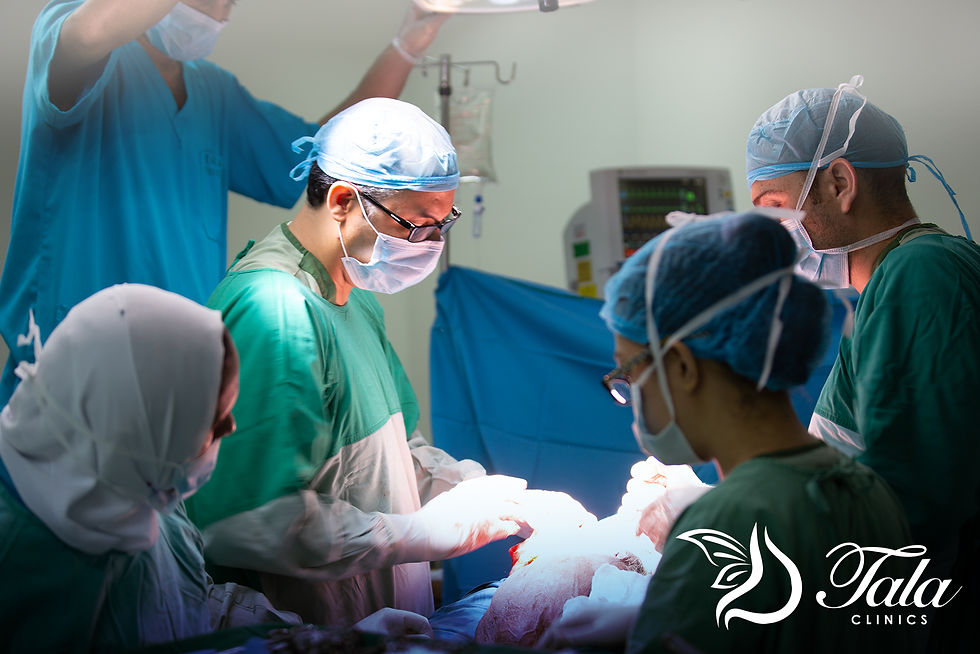Hemorrhoids
- DR TAREK

- May 16, 2022
- 3 min read
Updated: May 17, 2022

Hemorrhoids are protruding and swollen tissues that affect the anus or the lower part of the rectum. The chances of hemorrhoids increasing with age, up to the age of fifty, about half of adults encounter problems with itching, discomfort and bleeding, which can be signs of disease.
The reason for this is that the tissues that support the blood vessels in the anal area and the lower part of the rectum weaken and expand. Hemorrhoids are divided in terms of the severity of the disease into four degrees, with fourth-degree hemorrhoids being the most severe.
There are two types of hemorrhoids, either abscesses, and they are visible from outside the anus and lead to pain, bleeding, itching, and external or internal secretions, or their symptoms are usually silent bleeding, that is, without pain.
Causes of hemorrhoids:
Frequent and continuous straining during the defecation process as a result of diarrhea or constipation.
Heredity: If your parents had hemorrhoids, your risk of developing them increases as well.
Pregnant women are more likely to develop external hemorrhoids due to the increased pressure from the uterus on the anal area.
Age, as it contributes to the weakening of the tissues around the anus that support the area, which increases the risk of developing hemorrhoids.
Obesity: Obese people have a significantly higher risk of developing hemorrhoids compared to others
Symptoms of hemorrhoids:
Bleeding as a result of straining to defecate
Sometimes internal hemorrhoids may bulge outward to develop what are called protruding hemorrhoids
Annoying itching
Bleeding when straining during defecation
Small clots sometimes form as a result of the internal hemorrhoids being drawn inward
Swelling or swelling in the anus
Pain or sensation after rest
Sometimes infection
Minor stool leakage in advanced cases
Preventive steps from hemorrhoids:
The best way to prevent hemorrhoids is to soften the stool so that it can come out easily from the body and without putting pressure on the blood vessels in the rectum or anus. It is also preferable to follow the following tips:
Refrain from making a strenuous effort
Going to the toilet as soon as you feel the urge (not to be repressed)
Fiber You should focus on eating fruits, vegetables and whole grains in order to soften the stool
Thinking about the possibility of eating dietary fiber as a food additive
Drink 6-8 glasses of water and other fluids daily to help soften stools
Avoid frequent pressure and holding your breath during defecation
Exercising to avoid constipation
Avoid prolonged sitting, especially on the toilet, which increases pressure on the blood vessels in the anus
Complications of hemorrhoids:
Anemia due to chronic blood loss
Strangulated hemorrhoids This happens as a result of stopping the blood supply to them, and they suffocate
Which can lead to severe pain and eventually to tissue death
The occurrence of a clot within the blood vessels causing swelling with severe pain with severe bleeding
Diagnosis of hemorrhoids:
The doctor can diagnose external hemorrhoids by looking and then anal examination, and sometimes the doctor needs to do a full colonoscopy to determine the pathological stage and make sure that there is no other problem
Treatment of hemorrhoids:
Take medicine after consulting your doctor
Undergoing surgery to remove hemorrhoids, and the type of operation depends on the location and type of hemorrhoids
Lifestyle modification and focusing on eating dietary fiber
Home treatment of hemorrhoids:
Focus on eating high-fiber foods. Eat more fruits, vegetables, and whole grains, in order to soften stools
Warm Baths: Take hot baths for 10-15 minutes, three to four times a day
Keep the anal area clean Always make sure to clean the anal area and its surroundings using warm water and don't forget to dry it well
Do not use dry toilet paper, replace it with wet toilet paper that does not contain alcohol or perfume
Put a cold source, which is meant here, on the area where the hemorrhoids erupt, to reduce swelling
Sclerotherapy drugs:
Through this treatment mechanism, the doctor injects a chemical solution into the hemorrhoid tissue in order to reduce it. Although this injection does not cause any pain, it may be less effective than other methods.
Treatment of hemorrhoids by coagulation:
Coagulation techniques depend on the use of laser, heat or infrared light. This will lead to the hardening of the internal hemorrhoids and then their wilting. This procedure is linked to some side effects, and the chances of hemorrhoids reappearing are greater compared to treatment through surgical procedures.
Surgeries:
closed hemorrhoidectomy
Open hemorrhoidectomy
Hemorrhoidectomy by stapling
Ultrasound-guided hemorrhoidal artery ligation (Doppler)
Partial incision of the lateral internal sphincterotomy
Contact Dr. Tarek Shokry Abouollo clinic if you are curious to know more.



Comments